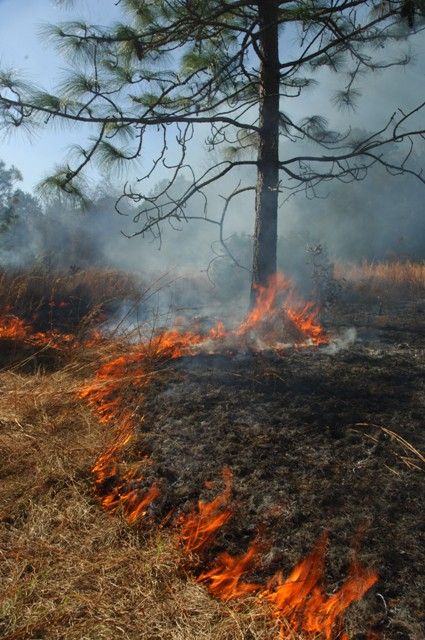Management Tools and Techniques
Fire is a natural occurrence in the Southeast. In the past, fires created by lightning strikes swept through thousands of understory acres in longleaf pine forests. For the past century, however, fire suppression has prevented it from shaping the landscape.
Prescribed fire is an important management technique. Forests and fields thrive on fire. By burning these areas every two to four years we stimulate the growth of native grasses and flowering plants. Many wildlife species also benefit from the increase in diversity of ground plants following a fire.
Prescribed burns increase safety by reducing the chance of a catastrophic wildfire. They prevent buildup of fuel load such as dead branches, pine cones and pine needles. With reduced fuel load on the ground the risk that a fire will become hot enough to ignite live tree trunks and spread into the canopy, where it could then become a dangerous forest fire, is reduced.
Prior to burning an area, many factors such as weather (wind speed and direction, relative humidity, upper atmospheric conditions and fuel moisture) are evaluated to determine if conditions are favorable for accomplishing the burn objectives. In more residential communities close to urban areas (as is the case with Spring Island), conditions are further limited because upper atmospheric conditions must minimize the ground-level smoke that persists after the burn.
The continued use of prescribed fire on Spring Island is a reflection of the community’s commitment to conservation. A total of 920 acres are managed by using prescribed burns, and approximately 400 acres are burned annually. Fire must be used as a primary management technique in the nature preserves if Spring Island is to maintain its biodiversity and beauty.

Copyright © Spring Island Trust
40 Mobley Oaks Ln. · Okatie, SC 29909 · 843-987-7008
Site by Sans Sheriff Studio


